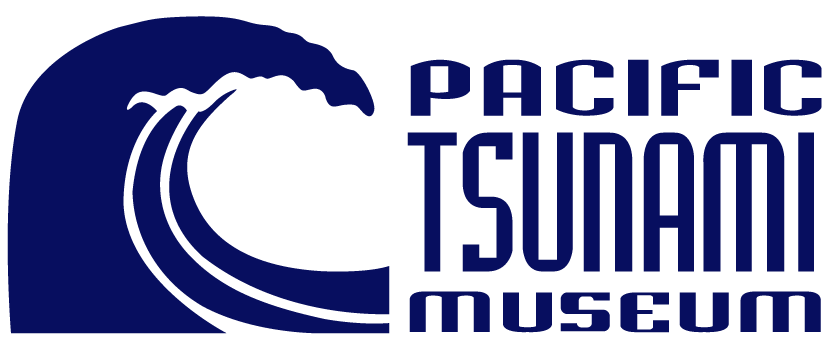What’s new?
What’s New at the Museum?
April is “Tsunami Awareness Month”. On Saturday, April 28, 2018, the museum will sponsor “Children’s Day” featuring tsunami activities for children of all ages. There will be stories and songs. It will be educational and fun! Learn, be aware, and be safe. Free admission.

Tsunami videos to view on-line
View the video compiled by the Hawai’i Emergency Management Agency: Tsunami Awareness and Monitoring. Seventy two years ago, a deadly tsunami struck the Hawaiian islands causing widespread damage across the entire state. Many were caught off-guard and one hundred fifty-nine people died when the waves and surge hit. A tsunami could strike Hawai’i in a matter of minutes or hours, depending on where the originating earthquake or volcanic activity occurs. Today, scientists at the PacificTsunami Warning Center can calculate if and when tsunami waves will reach Hawai’i. Along with the Hawai’i Emergency Management Agency, they want you to prepare for, and never be caught off-guard during a tsunami. It’s not a matter of if, but when.
View the video compiled by the Hawai’i Emergency Management Agency: Natural Warning Signs of a Tsunami. There is no season for tsunamis. They can strike Hawai’i at any time with little to no notice. Everyone should know the signs. Along some coasts, waves or surges of water could be small, but in other areas, they could be massive and deadly. Hawai’i must be prepared for the worst and hope for the best. Natural warning signs of a tsunami include:
Rapidly receding water or the sea rising and falling gently;
Abnormally high water level, higher than high tide;
Sound of a locomotive or jet plane coming from the ocean;
Fish floundering where there was once water.
Listen for the sirens, tune in to local media for instructions, be prepared to drop what you are doing, and move quickly to higher ground.
View the video compiled by the Hawai’i Emergency Management Agency: Tsunami Evacuation and Emergency Kits. In the event of a tsunami threat, you will hear the outdoor warning sirens located throughout the islands. Immediately tune in to your radio or television for updates and the latest information. If you are in a tsunami evacuation zone, quickly move to higher ground—or inland—until you are at least one hundred feet above sea level. Avoid steep cliffs and watch for falling rocks. Since tsunamis are a constant threat to Hawai’i, residents should always have their survival kits ready.
Hawai’i Tsunamis book for purchase at the Museum
The author of the book Hawai’i Tsunamis, Barbara Muffler, is available to sign copies at the Pacific Tsunami Museum on most Tuesdays through Fridays. If you are interested in the tsunamis that have affected Hawai’i, this book has many condensed stories and numerous previously unpublished images. All proceeds benefit the museum.


The mission of the book Hawai’i Tsunamis is to promote tsunami awareness to save lives, as well as to honor those lost in previous tsunami events. What shines through the stories presented is the strength, perseverance, and growth of the communities that endured these tragedies. The book melds history, science, and the human spirit in its presentation of scientific information and compelling survivor stories. Tsunamis are an ever-present threat in Hawai’i, and their origin can be distant or local. Due to its position in the Pacific Ocean, Hawai’i can be hit by distant tsunamis originating from several directions. It is not a matter of it, but when the next tsunami will strike our shores, and people need to be aware, prepared, and safe.
Last Revised April 2018
